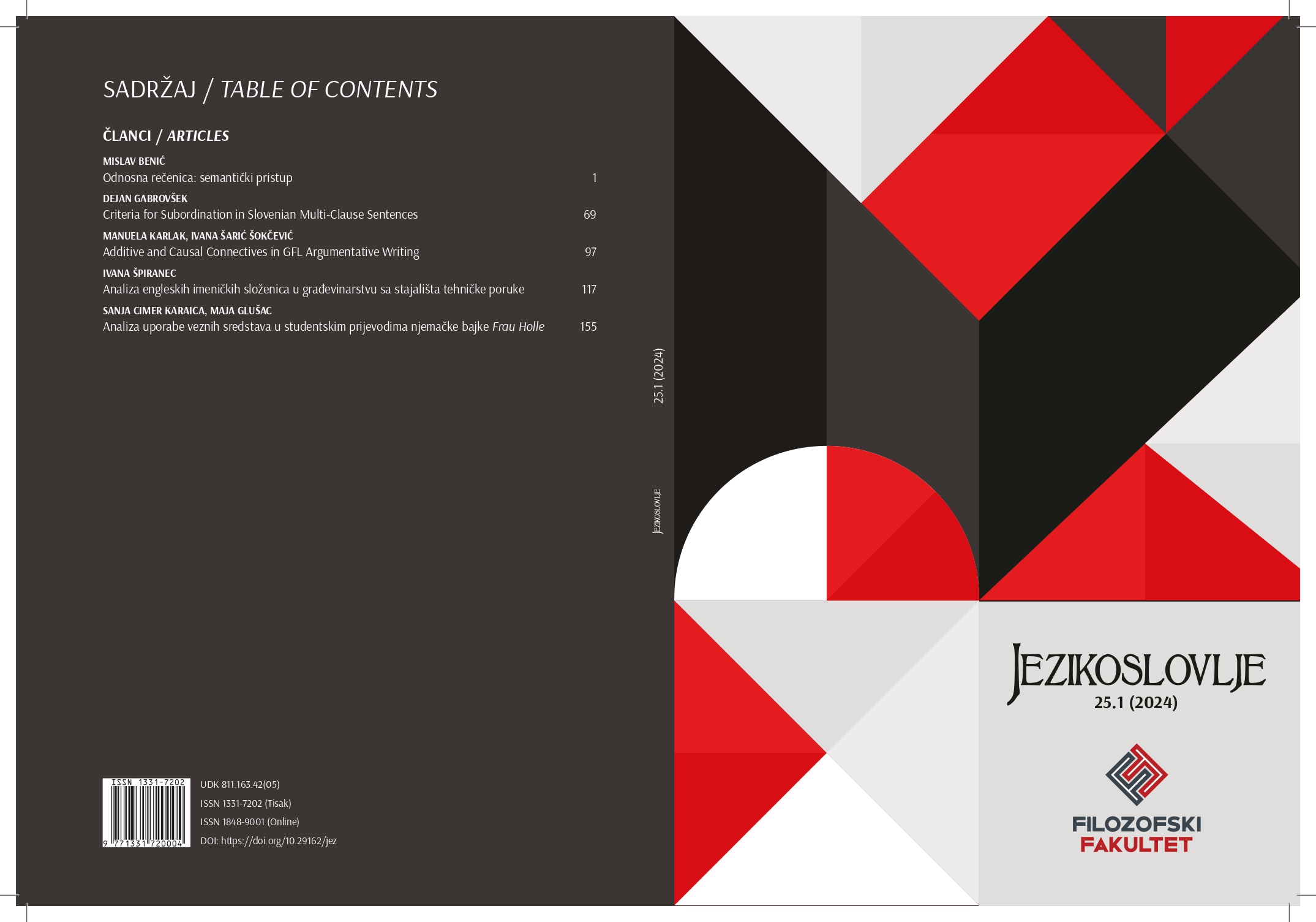Odnosna rečenica: semantički pristup
Relative clause: a semantic approach
Author(s): Mislav BenićSubject(s): Language and Literature Studies, Theoretical Linguistics, Syntax, Semantics, South Slavic Languages
Published by: Filozofski fakultet, Sveučilište Josipa Jurja Strossmayera, Osijek
Keywords: relative clauses; explicative clauses; subordinate clauses; restrictive relatives; non-restrictive relatives;
Summary/Abstract: This paper attempts to provide a maximally satisfactory definition of relative clauses. It is based on semantic criteria since meaning is more universal than form. Only finite constructions are considered, and the analysis is focused on Croatian and, to a considerably lesser extent, on some other Indo-European languages. The typological relevance of the results; therefore, is still to be explored. In the literature, relative clauses are defined in different ways. The interpretations of relative clauses are thereby either based on clear criteria but are not intuitive/practical, or they are intuitive/practical but not based on clear criteria. This article insists on clear criteria and the functionality of the defined category. Functionality is understood both as internal functionality (the coherence of the system of relative clauses) and as external functionality (its inclusivity into the supersystem of subordinate clauses). In this article, relative clauses are defined as: [1] subordinate clauses that define the value of a certain parameter in the situation of the main clause either as equal or as unequal, in one way or another, to the value of the same parameter in the situation that they express (restrictive relatives), and [2] semi-subordinate clauses associated with the main clause in such a way that they contain one of its components, a parameter or the whole situation, as the specific anaphora (non-restrictive relatives). A category thus defined has certain disputable parts which are examined thoroughly in the article. Nevertheless, its coherence is indicated by numerous formal and syntactic characteristics specific solely or almost solely to the defined category. The newly defined category fits very well into the supersystem too, since it enables the classification of the majority of dependent clauses into three coherent and compact groups: interrogative, explicative, and relative clauses. Subordinate interrogatives can also be interpreted as a subgroup of explicative clauses, i.e., explicative clauses containing an unknown or an unknown truth value. However, the difference between explicative and relative clauses is an ontological one. Explicative clauses are suitable for expressing situations while relative clauses are suitable primarily for expressing non-situations.
Journal: Jezikoslovlje
- Issue Year: XXV/2024
- Issue No: 1
- Page Range: 1-68
- Page Count: 68
- Language: Croatian

